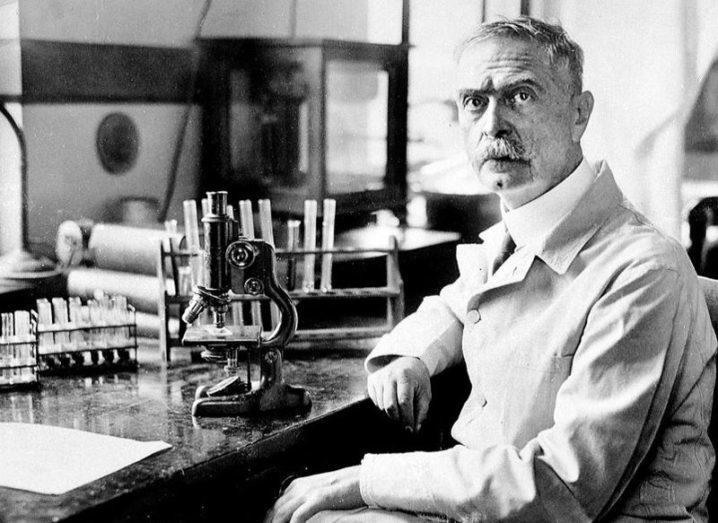Karl Landsteiner was an Austrian biologist and physician. He is best know for distinguishing the main blood groups in 1900. He identified the presence of agglutinins in the blood and classified the blood groups.
Early life
Landsteiner was born on June 14, 1868. Landsteiner’s father Leopold, known Viennese journalist, died at age 56, when Karl was only 6. His mother Fanny raised him on her own which led to a close relationship between him and his mother.
Education
Karl Landsteiner graduated with the Matura exam from a Vienna secondary school. Afterwards he earned a medical degree from the University of Vienna In 1891. From 1898 to 1908, he became an assistant in the University Department of Pathological Anatomy in Vienna. While he was there that he began his studies on morbid physiology. By 1911, he became Professor of Pathology at the University of Vienna.
Achievements
In 1900 Karl Landsteiner made his biggest discovery. He found that the blood of two people agglutinates under contact, and in 1901 he found that this was happening due to contact of blood with blood serum. Landsteiner managed to identify three blood groups of human blood – A, B and O, which he labeled C. Today we know that there is also a fourth blood group – AB. He also found out that blood transfusion between persons with the same blood group did not lead to the destruction of blood cells, while this was happening between the persons who had different blood groups. For this discovery Karl received the Nobel Prize in Physiology or Medicine in 1930.
While working with Constantin Levaditi and Erwin Popper, he discovered the infectious character of Poliomyelitis (also known as infantile paralysis) and isolated the the polio virus. This discovery happened in 1909.
Later life
At the age of 48, in 1916, he married Leopoldine Helene Wlasto. They had one child that was born the following year. In 1929 Landsteiner became a United States citizen. Karl Landsteiner died on June 26, 1943. In 1946 he was posthumously awarded with a Lasker Award and is recognized as the father of transfusion medicine.
Karl Landsteiner quotes
“Owing to the difficulty of dealing with substances of high molecular weight we are still a long way from having determined the chemical characteristics and the constitution of proteins, which are regarded as the principal constituents of living organisms.”
“The morphological characteristics of plant and animal species form the chief subject of the descriptive natural sciences and are the criteria for their classification. But not until recently has it been recognized that in living organisms, as in the realm of crystals, chemical differences parallel the variation in structure.”
“I have recently observed and stated that the serum of normal people is capable of clumping the red cells of other healthy individuals… As commonly expressed, it can be said that in these cases at least two different kinds of agglutinins exist, one kind in A, the other in B, both together in C. The cells are naturally insensitive to the agglutinins in their own serum.”

